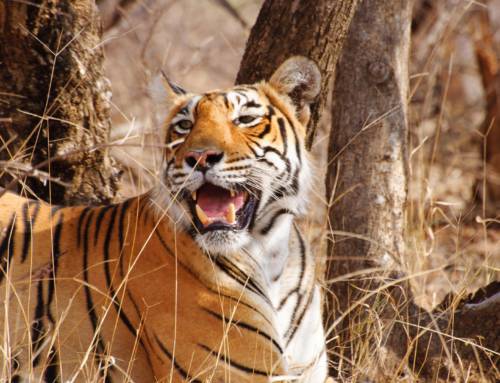Authors: Anusha Chaudhary and Trishala Ashok
This is the second article from our two-part series called ‘Wildlife Hunting’.
Until a century ago, the tropical forests and grasslands of India echoed with the sounds of guns triggered in pursuit of wild animals and birds. From trophy killing to poaching and wildlife trade, hunting has come a long way, harming many species and posing a threat to faunal and floral diversity.
India is known for its distinctive ecosystems consisting of biodiversity hotspots such as the Himalayas, the northeast region, the Western Ghats, and the equatorial forests of the southern Nicobar Islands. India holds half of the world’s tigers, six-tenths of all Asiatic elephants, and seven-tenths of all one-horned rhinoceroses. Thus, there is a necessity to conserve the rich Indian biodiversity.
Among various anthropogenic threats, hunting for bushmeat and poaching for illegal wildlife trade are significant threats to many wildlife species in India and globally. Reduction or mitigation of the impacts of hunting on wildlife can be cumbersome to implement due to socio-economic, cultural, political and biological challenges. The recorded information on threats posed by hunting on wildlife is very limited in India compared to South America and Africa.
A team of scientists from James Cook University (Australia), Centre for Wildlife Studies (India), National Centre for Biological Sciences (India) and Duke University (USA), reviewed 143 published studies in India. They found that only 5.6% were able to quantify the effects of hunting. Majority of the studies were either qualitative or focused on genetic and molecular research. This review revealed that 114 mammals are commonly hunted in India and that most studies were focused on large-bodied mammals. This highlighted the need for additional research focused on smaller-bodied mammals. Further analysis revealed that game birds, waterbirds and large-bodied birds such as hornbills and Great Indian bustards are also threatened because of hunting. Besides mammals and birds, reptiles and amphibians were found to be endangered too, being hunted for wild meat consumption and wildlife trading. Across India, more intense and persistent patterns of hunting were observed especially in Eastern Himalayas and Indo – Burma region. Prevalence of hunting in the culture could be due to the preference of wild meat over domestic animal protein. Hunting related activities were found to be higher in this region juxtaposed to other biodiversity hotspots of India, highlighting regional disparities in hunting pressure.
Hunting is still prevalent in many parts of India despite its legal prohibition by the Indian Wildlife (Protection) Act from 1972. Several wildlife populations have gone locally extinct over the last few decades due to these practices. The authors’ analysis established a good consonance between the Indian Wildlife (Protection) Act and the IUCN Red List in terms of identifying the most threatened species. Moreover, it was suggested that there is a need to also record the newly discovered species and update their protection status regularly. This review of hunting studies emphasises the need for further quantitative and qualitative research required to address the impacts of hunting on Indian wildlife in today’s changing scenario. This will greatly enhance our ability to monitor hunting activities and find ways to mitigate its negative consequences on India’s wildlife.
Original Research Article: Hunting: a serious and understudied threat in India, a globally significant conservation region – Nandini Velho, Krithi K. Karanth, William F. Laurence (Biological Conservation, 2012)
You can access the original article here.
You can access the Kannada translation here.





